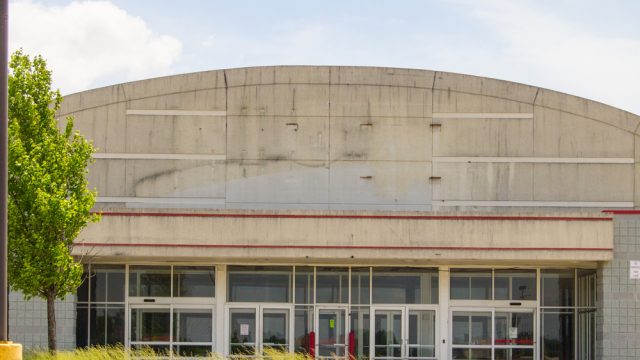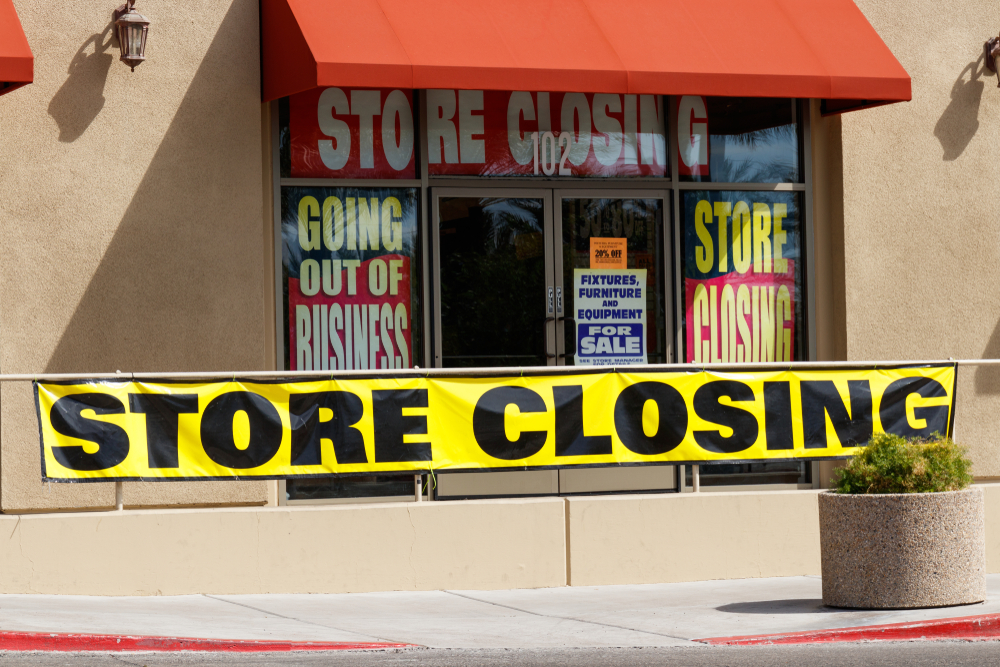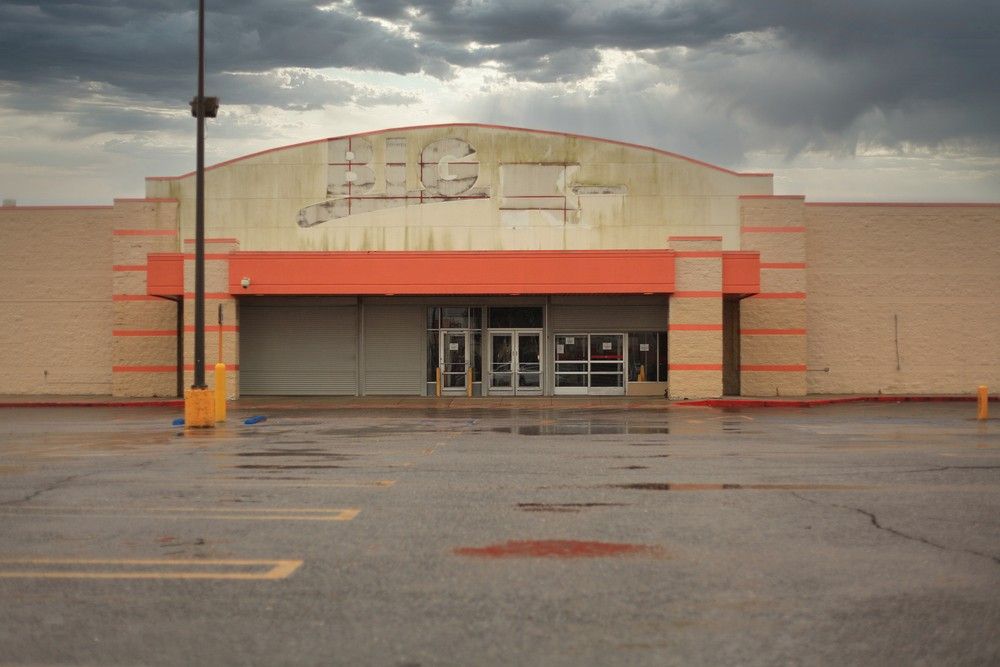This Iconic Store Has Closed All But 4 Locations
The nearly disappeared retailer once had nearly 2,400 stores in the U.S.

The past two years have not been kind to the retail industry as the COVID-19 pandemic made it difficult for stores of all sizes to operate, let alone stay profitable. But even before lockdowns took their toll on brick and mortar shopping, shifting customer habits made it harder for even well-established retailers to continue operating at the levels they once did. Now, one iconic store has nearly disappeared after all but four locations have shuttered. Read on to see which former superstore could be about to fade into history.
RELATED: This Iconic Department Store Is Closing 60 Stores, Starting in January.
Kmart has closed two more stores, leaving only four locations remaining.

After decades of decline, Kmart has only four remaining locations open to the public after it was announced that two more stores had recently closed, The Oregonian reports. The retailer's current state marks a stunning decline from its days as a commerce powerhouse, reaching nearly 2,400 locations across the U.S. and Canada at its peak during the 1990s.
"Kmart absolutely reigned supreme over the retail-discount market," Ben Schultz, a graduate student in public history at the University of Wisconsin at Milwaukee who has studied the history of the former superstore, told The Oregonian. "Their focus was to be America's discount store. They essentially wanted to have a monopoly over the industry, and it seemed like it was within their reach."
The last remaining stores are spread out over three states.

As store numbers dwindle, the remaining locations are spread out over four states. New Jersey is home to two Kmart stores in Avenel and Westwood. Meanwhile, New York has one location left on Long Island in the town of Bridgehampton, while the last Florida store remains open in Miami.
According to Shultz, it's likely not an accident the last remaining stores happen to be where they are—at least for now. "New York has had a strong stance against Walmart, so that has helped [Kmart]. But they still have to compete with Target and Amazon," he told The Oregonian. "I have a hard time imagining them staying around much longer."
RELATED: For more up-to-date information, sign up for our daily newsletter.
Kmart declared bankruptcy twice in the past two decades, including after merging with Sears.

The company's further shrinking footprint comes after nearly three decades of downsizing and financial woes. After achieving revenue of roughly $37 billion in 1993, the company began to close hundreds of its stores over the coming years, 24/7 Wall Street reports. By 2002, the company declared bankruptcy before eventually being bought out for $11 billion by hedge fund operator Eddie Lampert, who merged the brand with similarly flailing retail chain Sears.
Unfortunately, attempts at bringing the stores back to their former glory days failed to materialize as locations continued to shutter. Both companies eventually declared bankruptcy once again in 2018.
One expert predicts that the remaining stores are "going to be gone shortly."

One expert pointed out that the store's decline wasn't always unavoidable. "It's amazing to remember that [Kmart] started out the same year as Walmart and Target in 1962. Kmart had its day but wasn't able to define its market as clearly as the other two discounters," Vicki Howard, author of From Main Street to Mall: The Rise and Fall of the American Department Store, told The Philadelphia Inquirer.
Ultimately, experts say the retailer was done in by failing to adapt to competitors in the market and to establish itself as a brand. "Kmart fell behind in technology and logistics," Ken Nisch, chairman of brand strategy and retail design firm JGA, told the Detroit News in 2019. "They lost their pricing edge against Walmart. They were at a point where they could never catch up again."
And while the dwindling locations may have their blue lights on for now, one expert predicts that the days are likely numbered for the once-beloved brand. "Obviously, they are all going to be gone shortly," Mark Cohen, director of retail studies at Columbia University, told CNN in November. "This movie has ended, and we're watching the credits roll endlessly."
RELATED: This Beloved Retail Chain Is Closing Over 35 Stores in the Next 2 Months.





















